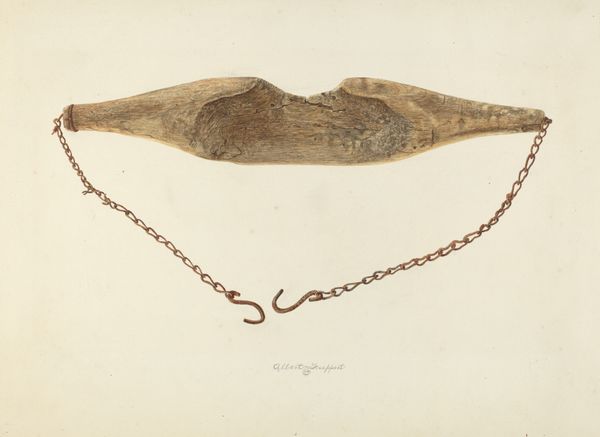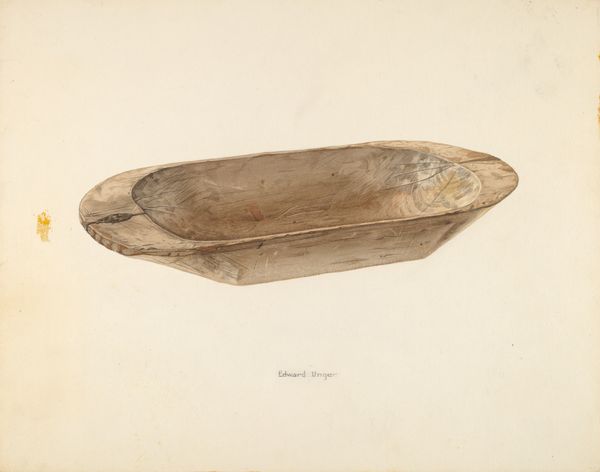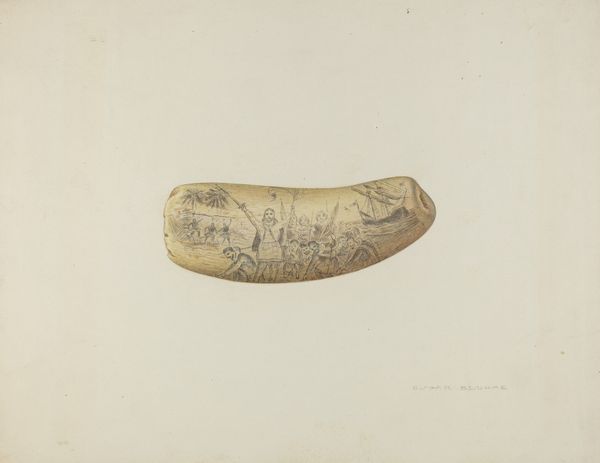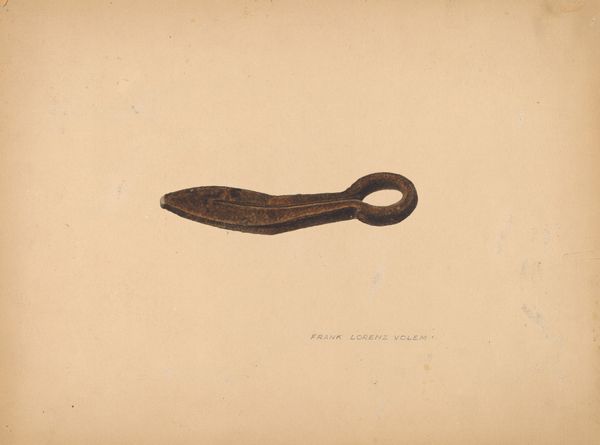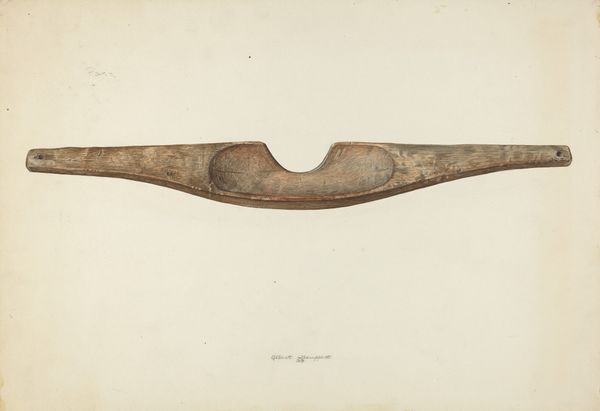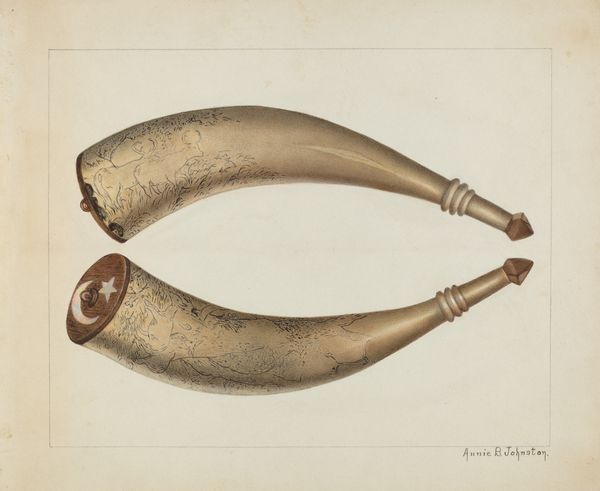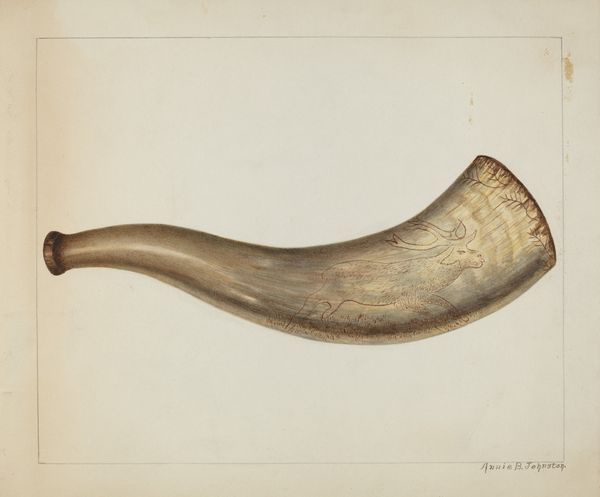
drawing, watercolor
#
drawing
#
watercolor
#
academic-art
#
watercolor
Dimensions: overall: 22.8 x 30.5 cm (9 x 12 in.) Original IAD Object: 11" long; 2 1/2" wide
Copyright: National Gallery of Art: CC0 1.0
Curator: Oh, my. It’s quiet, almost forlorn, isn't it? Just this horn floating on the paper. Editor: This is a watercolor and drawing titled "Powder Horn" by James M. Lawson, circa 1937. What’s compelling to me is that Lawson created this in a style that harkens back to academic art, yet he’s documenting a specific, utilitarian object. It feels almost… anthropological. Curator: Utilitarian turned precious, perhaps. I'm drawn to how carefully Lawson rendered the textures, the subtle variations in tone, the almost bone-like sheen of the horn. It reminds me of those perfectly preserved objects they unearth. It begs a story; the etching says "James Thain, born May 26, 1783," like a ghostly whisper from the past. Editor: Exactly! And this whisper tells a bigger story. Powder horns like these were incredibly common in the 18th century, especially amongst hunters and soldiers. Lawson isn't just painting a horn; he's presenting a document of a time when this object was crucial for survival and conflict, now rendered almost obsolete. He does this a century and a half later. Curator: Obsolete, yes, but imbued with echoes. See how the writing wraps gently around the horn's form? It’s not just informative; it’s intimate. And I think that is part of Lawson's point: that items such as this hold layers of meaning way beyond its function. It evokes a time and spirit of those individuals using these, even when time makes them seem almost primitive. Editor: And that perspective reflects its own time too, the 1930s, with America recovering from the depression, and on the cusp of the Second World War. There's a distinct search for Americana. Folk art and historical objects gained renewed significance as symbols of national identity. I can see Lawson subtly participating in that discourse. Curator: That’s fascinating! So this drawing isn't simply a visual record, but also a kind of cultural artifact in itself, created and seen through very specific socio-historical lenses. That in itself makes me want to grab my magnifying glass and look at this. Editor: Precisely. It highlights the dual nature of objects as both functional tools and powerful symbols. This invites a deeper contemplation of our relationship with material culture and its role in shaping narratives, collective and personal.
Comments
No comments
Be the first to comment and join the conversation on the ultimate creative platform.

